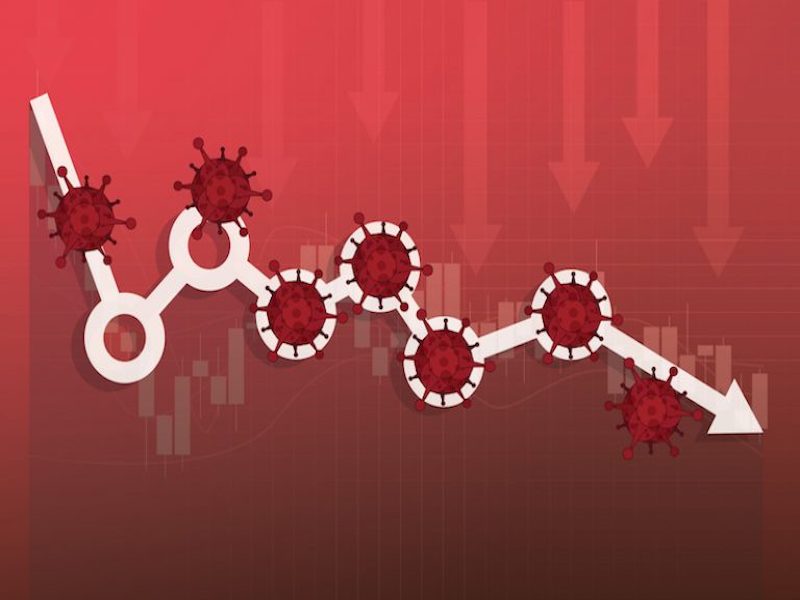
Last August, I wrote about whether central banks were creating a financial bubble with their coordinated easing programs intended to spur economic growth and/or lift inflation. In January 2020, I wrote about the end of the economic cycle, the potential for a recession and what that might mean for positioning an investment portfolio.
Little did I know, when I wrote these articles, that we would be experiencing further central bank action as a result of COVID-19, as we entered the current decade. Nor did I foresee the sort of sharp economic contraction that most countries will be experiencing in the next few quarters as activity has stopped or been significantly reduced in many sectors of the economy.
Read: Are investor portfolios structured to withstand a market correction?
The International Monetary Fund has forecasted that global GDP will decline by three per cent in 2020, before increasing by 5.8 per cent in 2021. To provide some context, global GDP declined by 0.1 per cent during the global financial crisis.
Canada isn’t immune to this, with a 6.2 per cent decline forecast for 2020, down from an expected GDP of 1.8 per cent as late as January 2020. Canada’s expected decline is similar to the forecast for other advanced economies, though the reduced energy price provides additional concerns for a large segment of the Canadian economy. The IMF sees a resumption in economic activity going into 2021, with Canadian GDP forecast at 4.2 per cent.
With interest rates already at historically low levels even prior to the pandemic, there’s been discussions about whether monetary policy can act as a tool to help economies weather the recession. The Bank of Canada dropped its key interest rate twice to its present level of 0.25 per cent. It’s combined this with fixed income purchase programs that extend well beyond the usual government bonds, including money market instruments, mortgage paper, corporate and municipal paper. However, these purchases are intended to maintain liquidity in fixed income markets and can’t help business and individuals weather the current recession.
Read: Is ‘offence the best defence’ for investors in current economic environment?
In previous circumstances, there’s been hesitation to broadly use fiscal policy to help businesses and individuals manage through economic downturns. Well, fiscal policy has been the main attraction in the current COVID-19 drama, with federal and provincial governments committing to hundreds of billions of dollars in direct payments, subsidies, tax deferrals, grants and the like. They’re encouraging businesses to maintain employees, asking landlords to work out rent deferrals and requesting that banks help mortgage-holders by deferring interest payments. Even with all of these initiatives, some businesses will be irreparably damaged.
So what are the implications for pension funds coming out of all of this? Most pension plans are revisiting their asset class return expectations, especially given where interest rates currently are and what that means for their strategic asset allocations going forward. There will certainly be board and committee discussions about risk tolerance, whether this has changed and whether the outcomes experienced have been tolerable.
While equity markets have experienced a sharp decline and modest rebound, it’s still too early to say where valuations will settle and, therefore, better understand the near- and longer-term prospects. Pre-pandemic discussions were around the overvaluation of equity markets and their reduced prospect going forward. Clearly, there have been some winners and losers in the past couple of months, with health care, pharmaceutical and online grocery and distributor companies faring quite well, while leisure and travel companies are taking a beating. In an environment where there are winners and losers, it’s likely that active management has provided some protection to investors.
Read: Active management paying off at CPPIB, not as much at PSP
Valuations for illiquid asset classes such as real estate, infrastructure and private equity won’t be known until the second and third quarters of the year. If the global financial crisis provides any guidance, infrastructure assets bounced back quickly, while real estate and private companies took some time to rebound, the length of which depended on the sector. Some strategists are concerned about the potential for inflation to emerge in the next few years, and certain real estate and infrastructure assets do provide protection against this. However, it will be important to be selective within these asset classes. For example, it’s unclear how certain retail and airports will fare.
It’s also unlikely we’ll see interest rates increase in the near term given the fragility of the economy. Generally, businesses and individuals and are hesitant to spend until they feel more confident. The consumer, who traditionally accounts for 70 per cent of GDP, is more likely to pay down debt accumulated during the recession and/or put money aside until there’s greater confidence. While not the base case for most investors, some are discussing negative interest rates and the prospect for stagflation. How will bonds fare in such an environment?
Assuming rates do increase at some point over the next few years, pension plans will have to weigh the benefits of security of investment and a liability match with earning a reasonable rate of return. While this tension is always present, it’s amplified in the current environment. I know some pension plans are considering adding some non-fixed income assets and/or illiquid fixed income to their liability hedging portfolio due to this prospect.
Read: AIMCo calls reports of losses on volatility strategy ‘dramatically’ overstated
Managing pension plans in times of uncertainty can be stressful. Now is a good time to step back and revisit risk tolerance and what this implies for the plan’s asset mix. As well, understanding how each asset class performs in different economic and market environments will be key to assessing whether the plan is well positioned for what’s yet to come.
